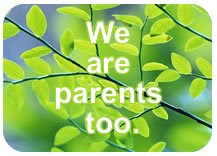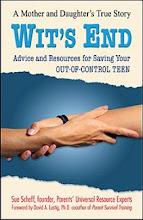
“Students come out the other side not only with a better education in the subject areas, but they are better citizens.”
– Paul Weimer, director, Character Education Partnership
The No Child Left Behind federal act has many students spending the majority of their day reading, writing and practicing math. However, a new study finds that character education, anti-bullying efforts and lessons in respecting and empathizing with others can actually raise children’s test scores.
“Most of my lessons of character and respect … I learned at home from my mom and my dad,” says Maceo, 13.
But now some schools are teaching lessons about empathy, cooperation and caring about others.
“Okay, what is kindness?” asks a teacher to her student.
Researchers at the University of Illinois analyzed the findings of more than 200 studies. They found that when schools help kids learn to manage their emotions and practice empathy and caring, both their behavior and their grades improve.
“Students come out the other side not only with a better education in the subject areas, but they are better citizens,” says Paul Weimer, director, Character Education Partnership.
But some students say you don’t learn emotional skills with a lecture.
“If they just force us to sit here and understand, it’s going to be sort of hard,” says Susan, 13.
Instead, experts say character skills and emotional growth come with practice.
In one outreach program, high school students spend time with younger kids who need a little help.
“It’s a chance for kids to show that there is character there, ” says Mik, 17.
“What we’re hoping is by making this prevalent in our curriculum, by infusing it into the curriculum and mentioning these words again and again, that our students will hear this, internalize it and they will in turn do these things automatically,” says Nancy Zarovsky, teacher.
Experts say that while character education at school is always helpful, it is considerably less effective if the child’s family and community don’t teach or support those same values.
Tips for Parents
– Paul Weimer, director, Character Education Partnership
The No Child Left Behind federal act has many students spending the majority of their day reading, writing and practicing math. However, a new study finds that character education, anti-bullying efforts and lessons in respecting and empathizing with others can actually raise children’s test scores.
“Most of my lessons of character and respect … I learned at home from my mom and my dad,” says Maceo, 13.
But now some schools are teaching lessons about empathy, cooperation and caring about others.
“Okay, what is kindness?” asks a teacher to her student.
Researchers at the University of Illinois analyzed the findings of more than 200 studies. They found that when schools help kids learn to manage their emotions and practice empathy and caring, both their behavior and their grades improve.
“Students come out the other side not only with a better education in the subject areas, but they are better citizens,” says Paul Weimer, director, Character Education Partnership.
But some students say you don’t learn emotional skills with a lecture.
“If they just force us to sit here and understand, it’s going to be sort of hard,” says Susan, 13.
Instead, experts say character skills and emotional growth come with practice.
In one outreach program, high school students spend time with younger kids who need a little help.
“It’s a chance for kids to show that there is character there, ” says Mik, 17.
“What we’re hoping is by making this prevalent in our curriculum, by infusing it into the curriculum and mentioning these words again and again, that our students will hear this, internalize it and they will in turn do these things automatically,” says Nancy Zarovsky, teacher.
Experts say that while character education at school is always helpful, it is considerably less effective if the child’s family and community don’t teach or support those same values.
Tips for Parents
Whether we’re feeling empathy when a loved one endures pain, or feeling relief from pain due to a placebo, pain-sensitive regions of our brains are at work — either creating or diminishing the experience of human pain. (MSNBC)
“The ability to “tune in” and empathize with others is a prerequisite for understanding, attachment, bonding and love — all of which are important for our survival,” says Tania Singer, Department of Imaging Neuroscience at University College, London.
Social understanding and social responsibility build on children's desire to understand and feel effective in the social world, to maintain connection with others and to reach out to those in distress. (American Association of School Administrators, AASA)
References
MSNBC
Tania Singer, Department of Imaging Neuroscience at University College, London
American Association of School Administrators (AASA)









